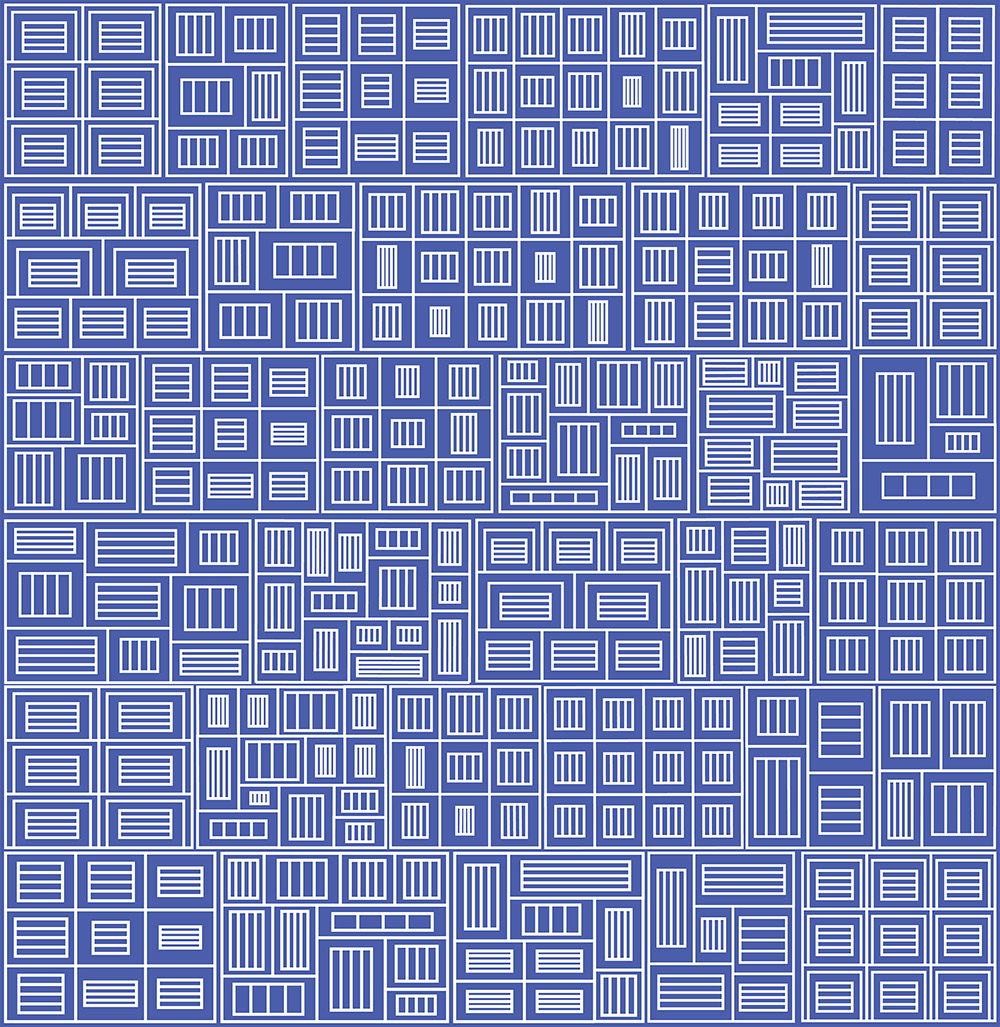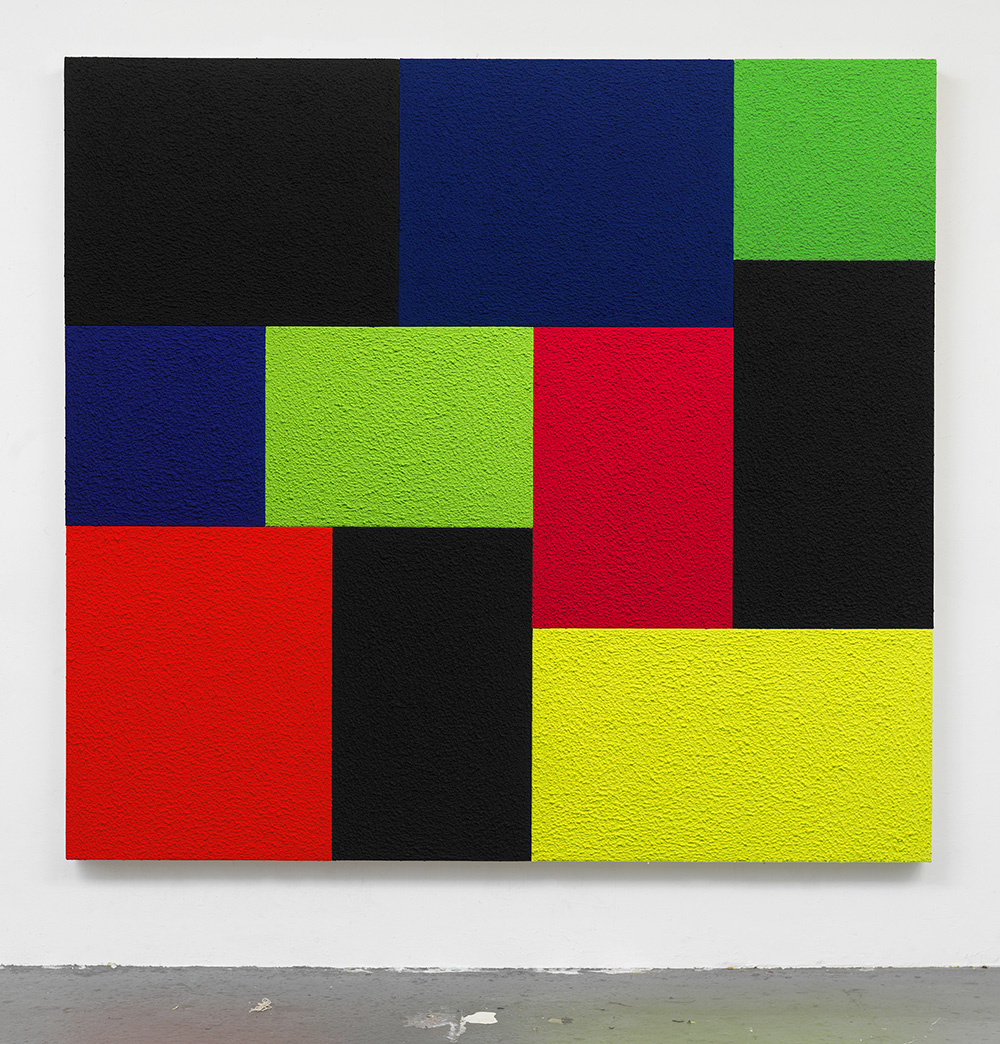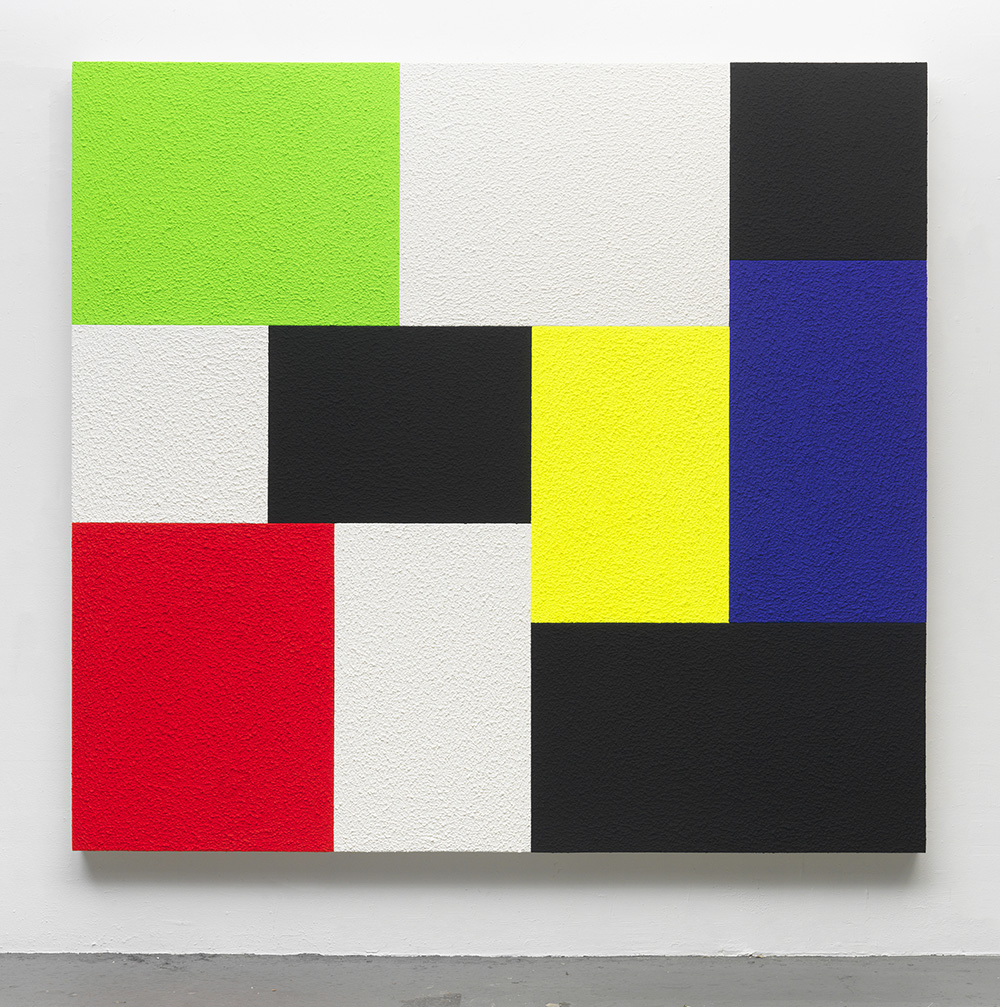ART-PRESENTATION: Peter Halley-Au-Desous/Au-Dessus
 Having emerged in New York’s East Village Art scene in the early ‘80s, Peter Halley’s paintings are diagrams of the lived experience in a contemporary urban environment, in which social space is ever more divided and geometrised but individuals remain connected via ‘conduits’ of information flows, roadways and electrical grids. As an essayist, Halley has also written about the prison cell as a metaphor for modern isolation. But his originality also lies in his use of color and texture.
Having emerged in New York’s East Village Art scene in the early ‘80s, Peter Halley’s paintings are diagrams of the lived experience in a contemporary urban environment, in which social space is ever more divided and geometrised but individuals remain connected via ‘conduits’ of information flows, roadways and electrical grids. As an essayist, Halley has also written about the prison cell as a metaphor for modern isolation. But his originality also lies in his use of color and texture.
By Efi Michalarou
Photo: Xippas Gallery Archive
Peter Halley’s solo exhibition “Au-Desous/Au-Dessus” is on presentation at Xippas Galley in Paris. His works resemble the Hard-edge paintings of Ellsworth Kelly, Brice Marden, and Kenneth Noland, but while the work of those artists may be described as “abstract”, Peter Halley prefers the designation “diagrammatic” for his precise, austere arrangements. He conceives of his vocabulary of squares, bars, and rectangles as coded referents to the way in which geometry pervades our world. Life in late-capitalist culture, according to Halley’s own critical writing, has been inscribed and circumscribed by geometric networks, think of the urban grid, the office tower, the high-rise apartment building, the correctional institution, the parking lot. Halley’s morphological investigations also focus on the traditional manner in which geometric abstraction has been perceived. By invoking the formal attributes of Minimalist art, rigid planes of color, unitary shapes, and nonhierarchical compositions, and mapping a narrative sensibility onto them, Halley calls the supposed neutrality of such art into question. Halley has also written on art and culture throughout his career. His early essays, which address post-structuralism, post-modernism, and the digital revolution of the 1980s, have been anthologized in two books of collected writings. From 1996 to 2006, Peter Halley published the Index magazine, which featured in-depth interviews with creative people. As both author and artist, Halley has drawn upon the writings of the French theoreticians Michel Foucault and Jean Baudrillard to articulate and substantiate his dual critique of culture and art. Foucault’s analysis of the geometric organization of industrial society, particularly institutional modes of confinement, inspired Halley to transform a Minimalist square into a prison cell by adding three vertical bars to the form. In response to Baudrillard’s exploration of postindustrial culture: its reliance on information systems, media representation, and an economy that privileges image over product, Halley shifted to schematized depictions of enclosed spaces, linked to the world through a network of electronic, telephonic, and fiber-optic conduits. In the 1990s, Peter Halley broadened his painting practice by making installations. The paintings were hung on backgrounds (usually digital prints), whose motifs are drawings and diagrams drawn from his archives or sketchbooks. For the exhibition the artist has created a complex installation which takes up the entire gallery space, from the first floor to the basement, and including the stairs, entrances and corridors. It is made up of paintings, wall-sized digital prints, and texts. On the first floor, four paintings created specifically for the exhibition are hung on a printed background, producing a trompe-l’oeil effect where the paintings and the prints are in literal dialogue. In the stairwell, the entrance, and the corridors, a set of printed drawings highlights the specific architectural features of the gallery, creating effects of thresholds and passages. Finally, in the basement, three paintings inspired by neo-plasticism take up compositions already used by the artist, in a version stripped of its usual motifs. The text written by Jill Gasparina*, and itself composed of self-contained blocks freely arranged on the wall, goes back over questions which the artist has been developing since the 1980s.
*A graduate of modern literature, Jill Gasparina is an art critic, theorist, curator and teacher. From 2009 to 2013 she co-directed the La Salle Bathroom Art Center in Lyon. After working on the aesthetic theories of mass art, and crossovers between contemporary art and cultural industries, she began in 2013 a doctorate in art history at the University of Paris IV dealing with the mythologies of distance communication technologies in artistic modernity.
Info: Curator: Jill Gasparina, Xippas Gallery, 108 rue Vieille du Temple, Paris, Duration: 9/6-28/7/18, Days & Hours: Tue-Fri 10:00-13:00 & 14:00-19:00, Sat 10:00-19:00, www.xippas.com


